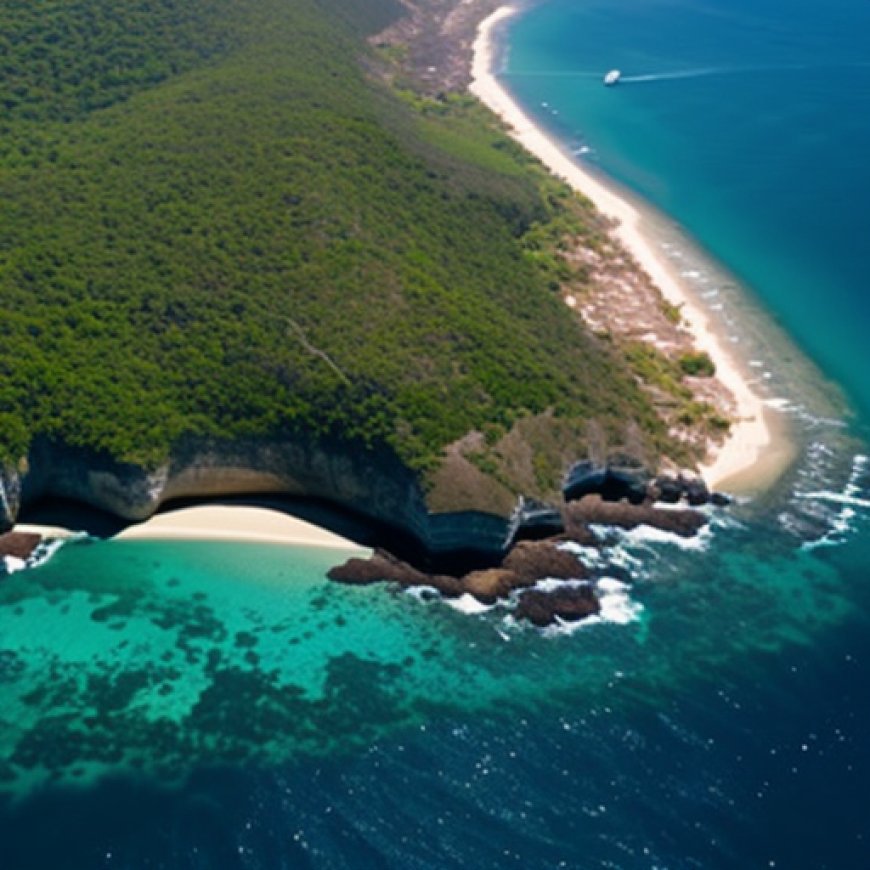Like Sayani Gupta, Get A Sky View Of The Great Barrier Reef By A Helicopter Tour When You Visit Australia


Sayani Gupta’s Great Barrier Reef Adventure
Sayani Gupta recently embarked on an adventure to the Great Barrier Reef in Australia. She shared her experience on Instagram, highlighting the beauty of the blue waters and coral reefs. Sayani took a helicopter tour over the reef, capturing stunning aerial views of the sea and the underwater reefs. Her post received a heartfelt response from her friend Smriti Kiran, who expressed how special and beautiful the trip was.
About the Great Barrier Reef
The Great Barrier Reef is the largest coral reef system in the world, stretching over 2,300 kilometers and covering an area of approximately 344,400 square kilometers. It is composed of 2,900 individual reefs and 900 islands. The reef is located off the coast of Queensland in Australia and is visible from space. It has been recognized as a UNESCO World Heritage site for its Outstanding Universal Value and is considered one of the seven natural wonders of the world.
Exploring the Great Barrier Reef
- Helicopter flights are available from various locations, including Cairns, Port Douglas, Townsville, Airlie Beach, Seventeen Seventy, and Hamilton Island.
- Combination flights are offered, allowing visitors to pair a helicopter ride with a snorkeling tour or a visit to an interactive pontoon on the reef.
- Flights can take you over iconic locations such as Whitehaven Beach, Heart Reef, Magnetic Island, Green Island, and remote sandy corals.
- For those who love rainforests, there are helicopter rides that combine the reefs with the lush greenery of the rainforest.
- Private charter helicopters are available for private groups or large families.
- Helicopter flights provide a unique bird’s eye view of the Great Barrier Reef, allowing visitors to witness the marine and coral life.
- Some helicopter rides even offer a glass bubble in the front, providing unobstructed views and photo opportunities of the reef.
Sayani Gupta’s Great Barrier Reef adventure showcases the beauty and importance of this natural wonder. By promoting sustainable tourism and raising awareness about the reef’s significance, she contributes to the achievement of the Sustainable Development Goals (SDGs), particularly SDG 14: Life Below Water, which aims to conserve and sustainably use the oceans, seas, and marine resources.
SDGs, Targets, and Indicators
1. Which SDGs are addressed or connected to the issues highlighted in the article?
- SDG 14: Life Below Water
- SDG 15: Life on Land
The article discusses the Great Barrier Reef, which is a marine ecosystem, and the importance of its conservation. This aligns with SDG 14, which aims to conserve and sustainably use the oceans, seas, and marine resources. Additionally, the article mentions the Great Barrier Reef being added to the World Heritage List by UNESCO, highlighting the importance of protecting natural sites, which connects to SDG 15, which focuses on protecting, restoring, and promoting sustainable use of terrestrial ecosystems.
2. What specific targets under those SDGs can be identified based on the article’s content?
- SDG 14.2: By 2020, sustainably manage and protect marine and coastal ecosystems to avoid significant adverse impacts, including by strengthening their resilience, and take action for their restoration, to achieve healthy and productive oceans.
- SDG 15.5: Take urgent and significant action to reduce the degradation of natural habitats, halt the loss of biodiversity, and protect and prevent the extinction of threatened species.
The article emphasizes the need to protect and conserve the Great Barrier Reef, which aligns with the targets of SDG 14.2. It also mentions the Great Barrier Reef being a World Heritage site, highlighting the importance of preserving natural habitats and preventing the extinction of threatened species, which connects to SDG 15.5.
3. Are there any indicators mentioned or implied in the article that can be used to measure progress towards the identified targets?
- Indicator for SDG 14.2: Proportion of total research budget allocated to research in the field of marine technology.
- Indicator for SDG 15.5: Red List Index.
The article does not explicitly mention any indicators related to the identified targets. However, to measure progress towards SDG 14.2, one possible indicator could be the proportion of total research budget allocated to research in the field of marine technology. This indicator would reflect the commitment to understanding and managing marine ecosystems effectively. For SDG 15.5, the Red List Index, which assesses the extinction risk of species, could be used to measure progress in preventing the extinction of threatened species.
Table: SDGs, Targets, and Indicators
| SDGs | Targets | Indicators |
|---|---|---|
| SDG 14: Life Below Water | 14.2: By 2020, sustainably manage and protect marine and coastal ecosystems to avoid significant adverse impacts, including by strengthening their resilience, and take action for their restoration, to achieve healthy and productive oceans. | Proportion of total research budget allocated to research in the field of marine technology. |
| SDG 15: Life on Land | 15.5: Take urgent and significant action to reduce the degradation of natural habitats, halt the loss of biodiversity, and protect and prevent the extinction of threatened species. | Red List Index. |
Source: swirlster.ndtv.com








